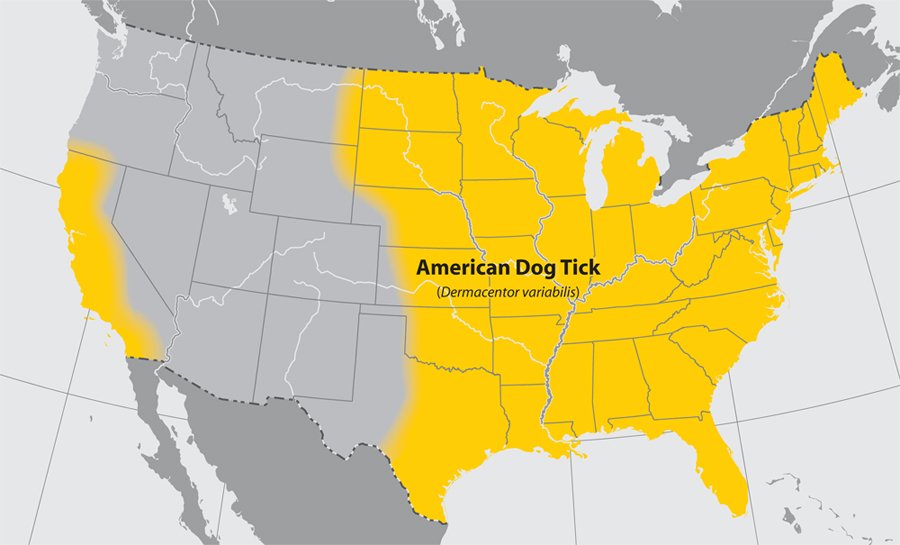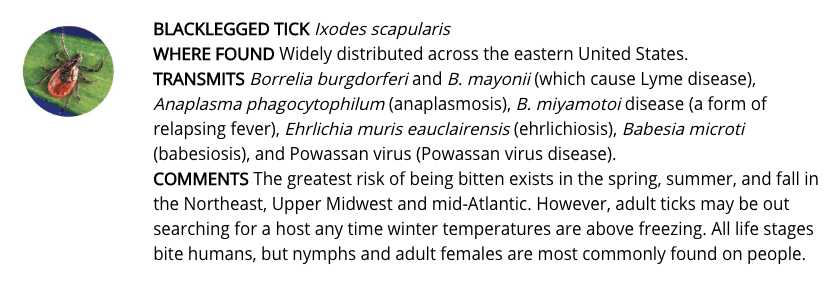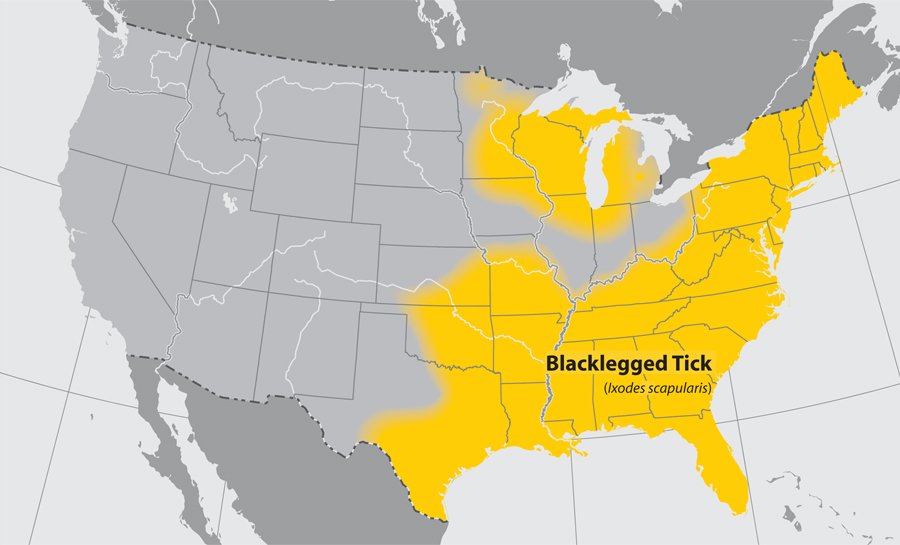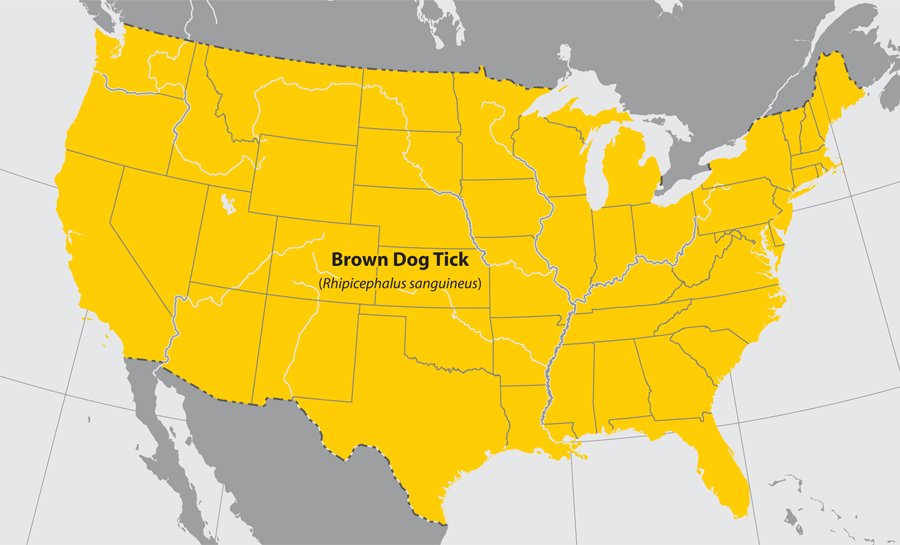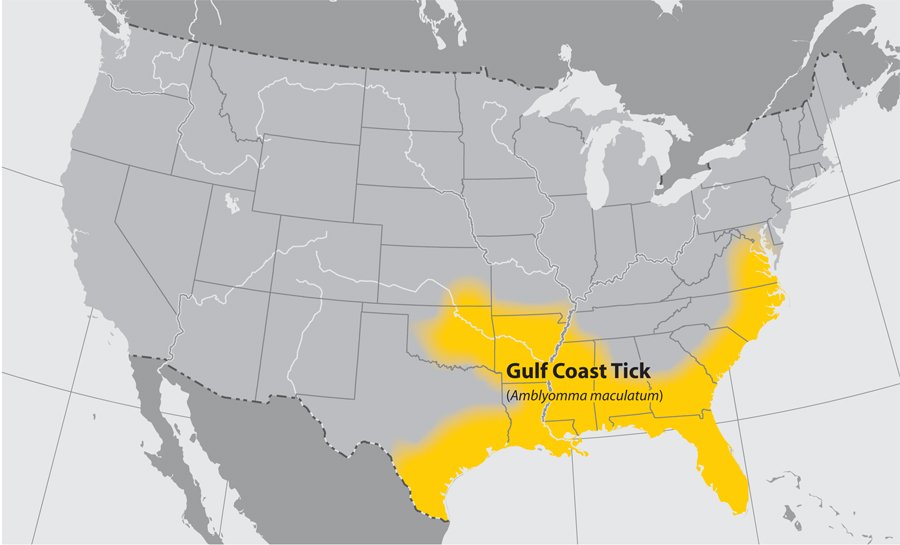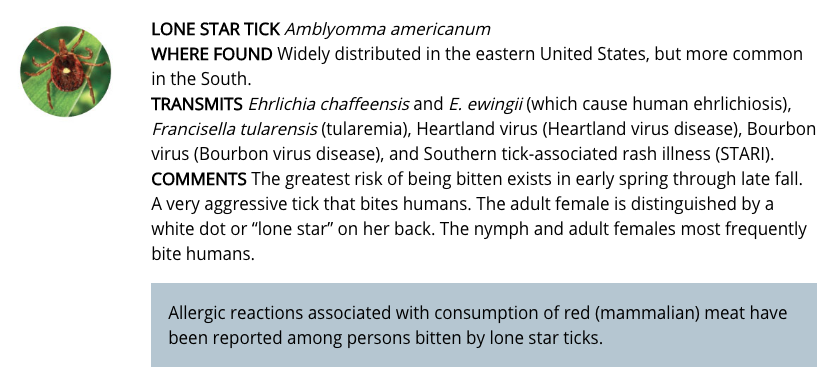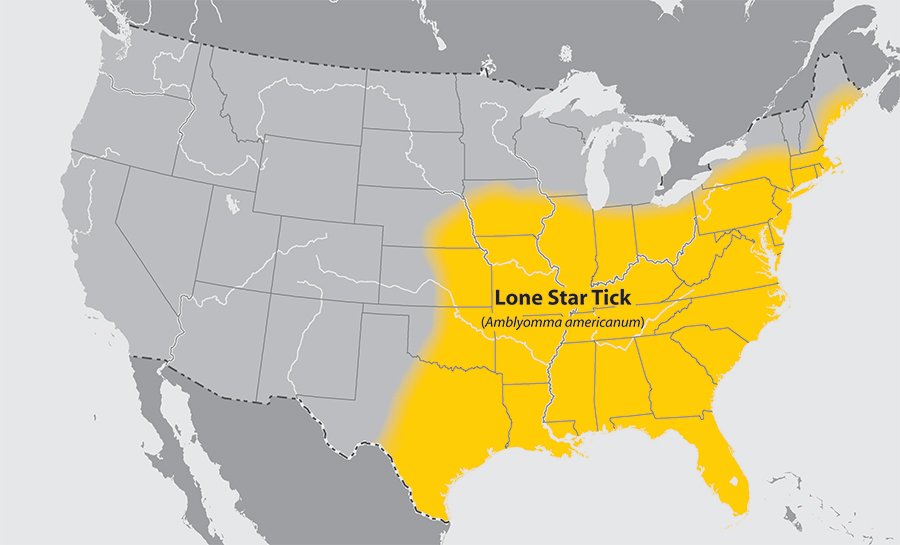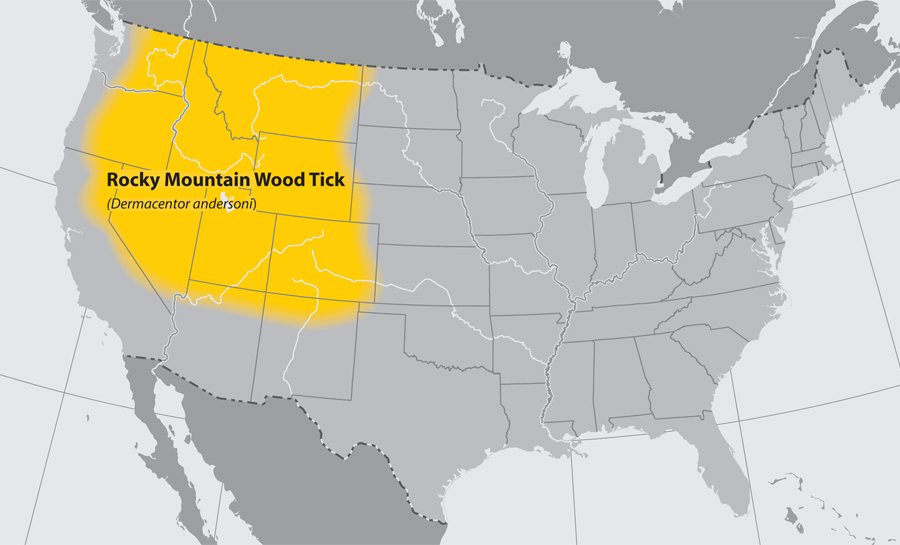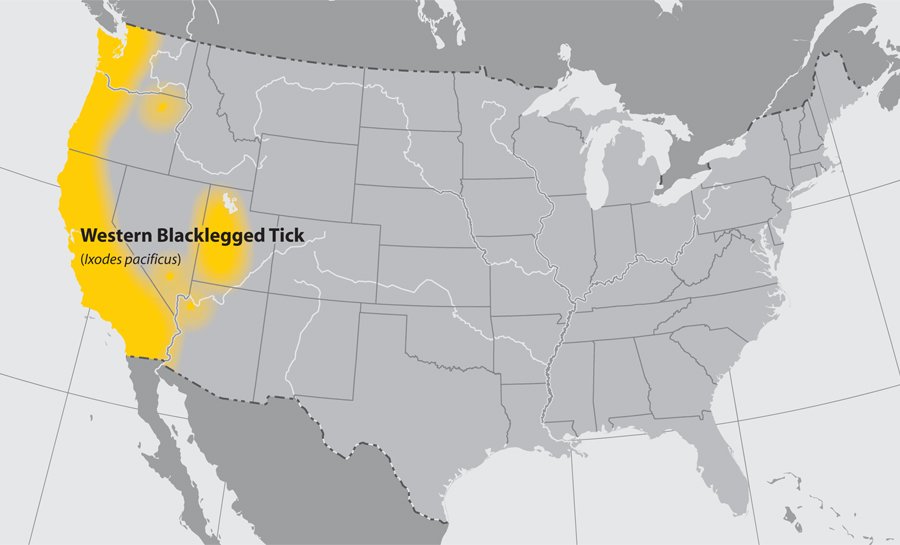Deer ticks (Ixodes scapularis, also referred to as black legged ticks) need blood to survive. In a typical two-year tick life cycle, the tick must have three blood meals. The life cycle begins in the spring of year one.
In southern Maine, adults lay thousands of eggs on the ground around the end of May, which hatch into six-legged larvae around the first or second week of August. The larvae are about the size of the period at the end of this sentence. It is at this stage that the ticks receive their first blood meal, usually from mice, chipmunks, and birds. 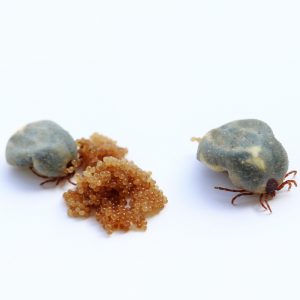
This is a point that larvae may become infected with the Lyme disease bacteria. After feeding for several days, the ticks become fully engorged and drop off the host, usually into leaf litter. They will remain dormant until the spring of year two when the larvae molt into eight-legged nymphs, which are about the size of a poppy seed. In the State of Maine, the months of May, June, and July are peak periods for nymphs seeking their second blood meal. While most feed on mice and chipmunks, it is the time of year when pets and humans start spending more time outdoors and become unsuspecting hosts. Contrary to popular belief, small rodents, not deer, are responsible for transmitting the Lyme disease bacteria to ticks. A typical mouse can carry dozens of ticks during peak tick activity periods and all have the potential to transmit Lyme disease.
Nymphs are very difficult to detect and easily overlooked. After feeding for four or five days, the nymphs will drop off the host and eventually molt into eight-legged adults. In late summer and through the fall, the adult ticks find their way onto large mammals, usually deer, where they mate. This is a time when humans and pets are again susceptible to picking up ticks. While still a threat, the adult ticks are larger than the nymphs and therefore easier to see. The females will attach and feed for up to a week, and then the engorged deer tick will drop off and lay up to 3,000 eggs which will hatch in the spring. The two-year tick life cycle begins again
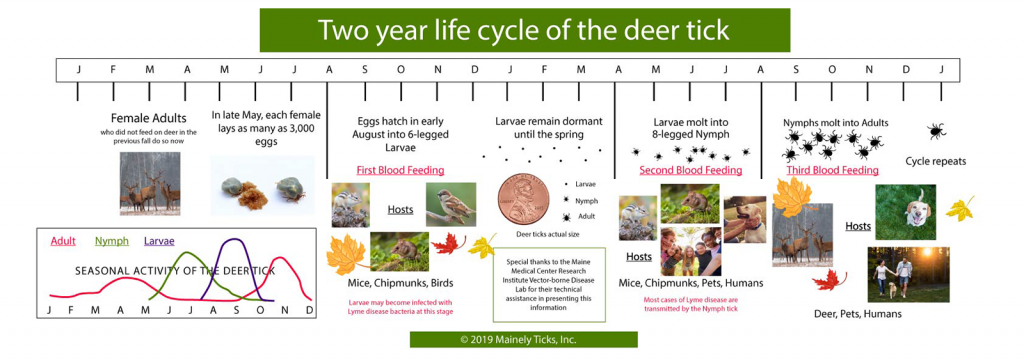
Geographic Distribution of Ticks That Bite Humans
From the Centers of Disease Control & Prevention

